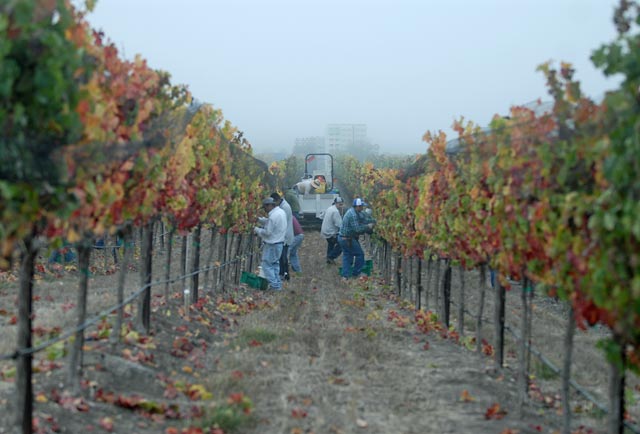At a January 15 meeting of Lompoc-based wineries, there was a chilly reception to the Santa Barbara Vintners’ proposal to raise marketing funds by adding a 2 percent fee to every bottle sold. This would be achieved by implementing a BID, or business improvement district, across the entire county.
“Despite a full-court press by five folks from the leadership of the Vintners, all but two of the wineries in attendance stated they would not sign a petition for the Vintners’ Wine BID,” reported Stephen Pepe, owner of Clos Pepe Vineyards.
Santa Barbara County is the first region anywhere to attempt to apply the BID structure — more commonly used to spruce up retail neighborhoods and hotel hubs — to wine country. (Read more about it here.) Since last summer, the Santa Barbara County Vintners Association has been hosting information meetings to let vintners know about the proposal.
“That was just one meeting of 20, and there are a lot of positive things happening,” said Alison Laslett, CEO of the Santa Barbara Vintners. “We’re gaining momentum. People are learning about it, and they absorb it when they come to two or three meetings. That was the first meeting we had with Lompoc vintners.”
Despite the lingering concerns, even vintners opposed to the fee appreciate why the push is being made. “No one present questioned the need for funding the Vintners on a stable and at a reasonable level,” said Pepe. An alternative idea being floated is to build a wine auction that directly benefits the organization or the formation of a grape commission, which can also raise money.
Laslett recognizes that the BID is not a perfect solution, but believes this process is having an overall benefit to Santa Barbara County’s wine community.
“I don’t know what’s gonna happen with the BID, but I know what’s important is that the vintners community is engaging and they’re talking to each other, they’re talking to me,” said Laslett. “We are looking for a solution. Maybe it will be the BID, but maybe it will be a different structure. This is going to be a process and there are going to be supporters and detractors for whatever the process is. Anytime you construct a funding source for an industry, someone is not going to be happy.”
She said that people from the hotel industry, where BIDs are common, recall a similar sort of debate when they started their fees. “What they did is hash it out and then put in place a solid funding source that people are happy with,” said Laslett.
The petition drive for the BID was set to begin on February 1, but Laslett recently received new information on who would be included. That means the process will be delayed, and she hopes to announce a new start date in two to three weeks.




